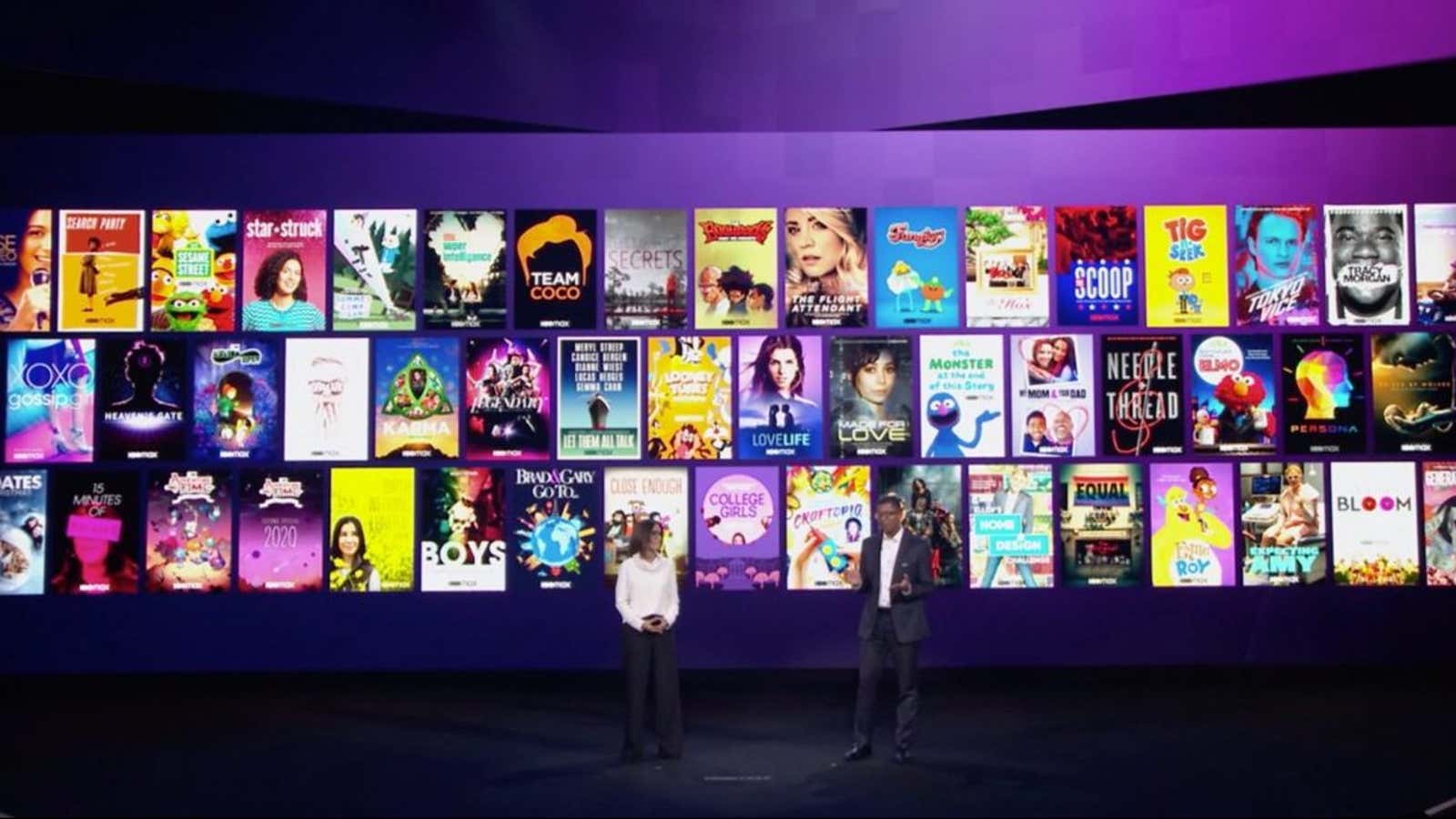When NBCUniversal’s streaming service, Peacock, launched last year, the company bragged that it featured the “lightest ad load in the industry,” at only five minutes of advertisements per hour of content (or less). That was a huge improvement over regular TV, which airs about 12 minutes of commercials every hour. Now WarnerMedia, which has a new streaming service of its own in HBO Max, is saying it sees Peacock’s five minutes of ads and respects it—but it’s going down to four.
WarnerMedia showed off its upcoming ad-supported version of HBO Max at last week’s TV upfronts, the annual meeting in which networks make their pitches to potential advertisers. Though the company’s presentation was overshadowed by its proposed merger with Discovery, it still made some time to talk up the new offering. Aptly named HBO Max With Ads, the service costs $10 per month ($5 cheaper than the ad-free version of HBO Max) and will roll out next month. The key takeaway for consumers was that it will have one less minute of ads per hour on average than any other service.
“We will have the lightest ad load in streaming,” JP Colaco, WarnerMedia’s head of ad sales, told Adweek in response to a question about the company’s competitors making the same claim.
Streaming ads are better, but need fixing
If you only subscribe to Netflix or Disney+, you’ve never seen an ad. (And you might never will.) But many other platforms, from Paramount+ to Peacock, have ad-supported options. Many consumers prefer a cheaper, ad-supported streaming platform versus a more expensive one without ads, when given the choice. Consumers may hate ads, but they’re still willing to deal with them if the price is right.
And with so much entertainment consumption moving online, the ad dollars have followed. Advertisers will spend $7 billion on digital ads at this year’s upfronts, up 43% from last year, according to eMarketer. More will be spent on regular TV (about $13 billion), but the gap is narrowing.
Watching content on the internet was supposed to provide a better advertising experience than traditional television. While it has clearly improved on TV in certain areas (like reducing ad time), it has slipped up in others. Ads on streaming services are often repetitive and buggy, and, on some platforms, they can appear in the middle of scenes.
That has set off a race to see which media company can innovate the fastest and make the most user-friendly ads. Peacock, Hulu, and, soon, HBO Max, all offer a “pause ad“—an ad overlay that appears only when you pause a show. They also grant advertisers several more outside-the-box ad options like branded recommendation pages, which allow companies to be seen alongside popular content without annoying viewers. The 15- to 30-second ad (grouped together in frequent commercial breaks) that is still commonplace on regular TV is increasingly a rarity in the streaming world.
In order to further differentiate itself from the intrusive advertising experience of old, media companies will have to continue to figure out ways to sneak ads into streaming shows without invoking the wrath of consumers. The four minutes of ad time WarnerMedia boasts about might have to become three minutes eventually. It’s unclear how few ads platforms can show while still profiting from them, but the streaming companies intend to find out.
